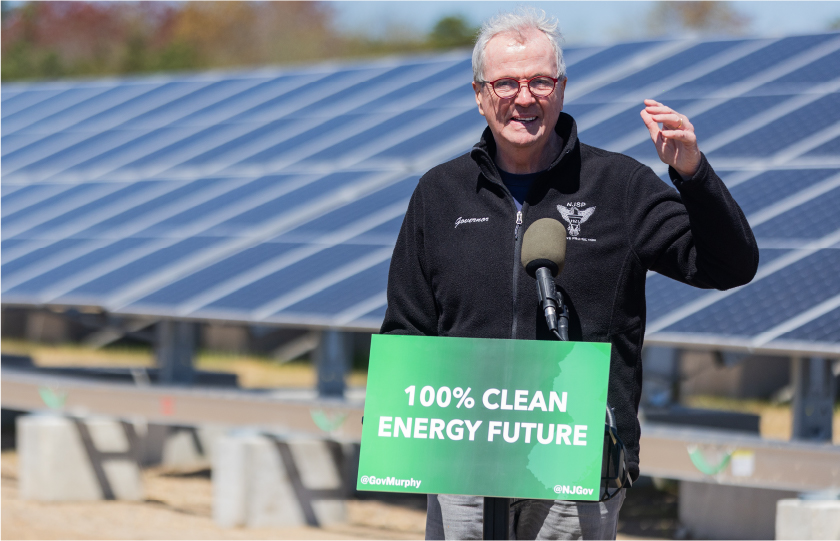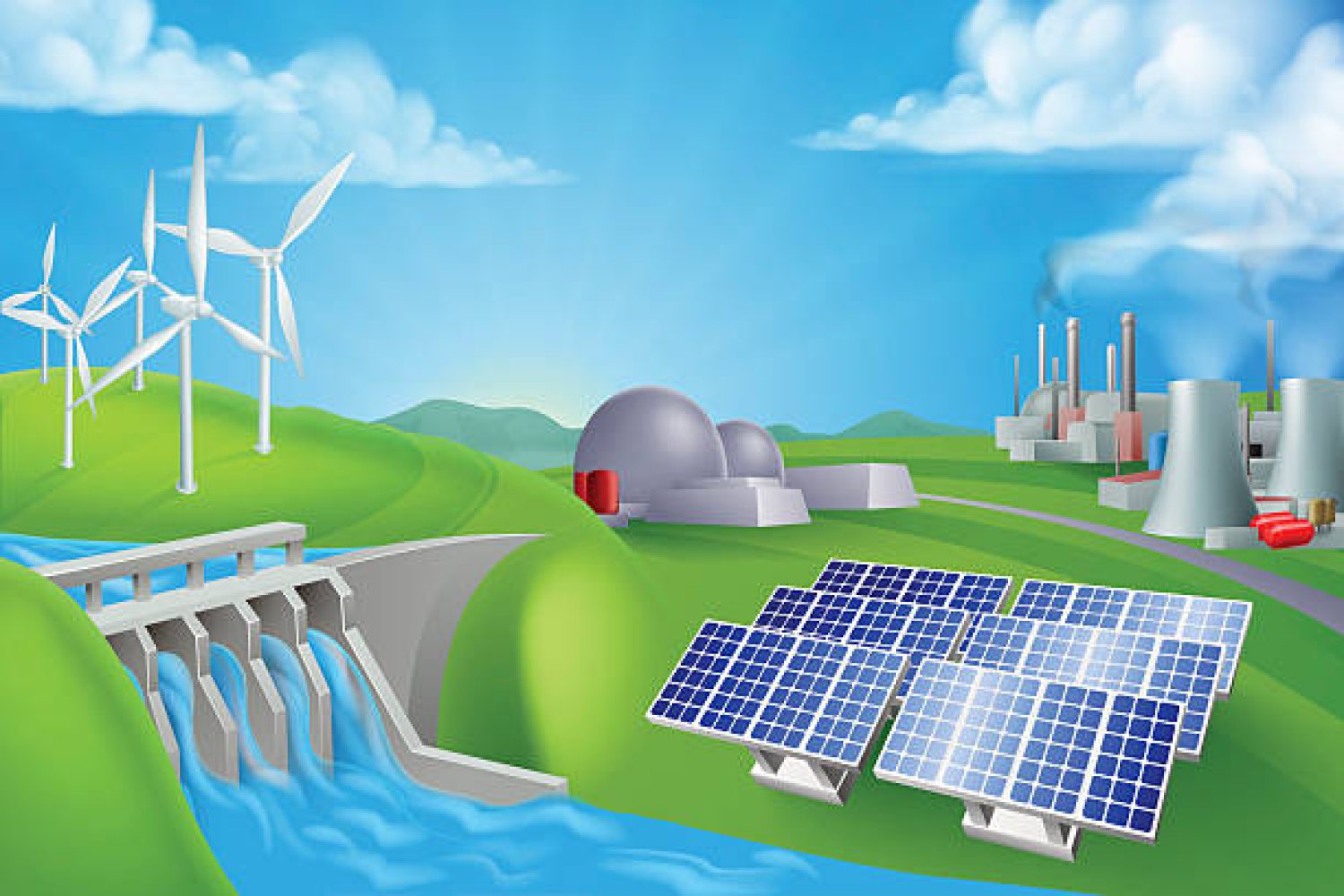Surging Electricity Bills Put Pocketbook Pressure on New Jersey Voters – MercerMe

Report on New Jersey’s Energy Policy and its Alignment with Sustainable Development Goals
Executive Summary
- A recent 20% spike in utility bills has intensified focus on New Jersey’s energy policies, directly impacting progress towards Sustainable Development Goal 7 (Affordable and Clean Energy).
- The state’s clean energy transition, a key component of its strategy for SDG 13 (Climate Action), has faced significant setbacks, particularly in offshore wind development.
- These challenges have created financial hardships for residents, undermining efforts related to SDG 1 (No Poverty) and SDG 10 (Reduced Inequalities).
- Failures in public-private and inter-governmental cooperation highlight obstacles to achieving SDG 17 (Partnerships for the Goals).
- The regional grid operator, PJM Interconnection, is cited as a primary factor in rising costs due to delays in approving low-cost renewable energy projects.
Analysis of SDG 7: Affordable and Clean Energy
Progress Towards Clean Energy Transition
The administration of Governor Phil Murphy has pursued an energy policy aligned with SDG 7 and SDG 13, establishing a goal of 100% clean energy by 2035. Key achievements include:
- Reaching a milestone of five gigawatts of installed solar power in 2024.
- Securing $156 million in federal funding from the EPA’s Solar For All program, specifically targeting low-income households to advance SDG 10 (Reduced Inequalities).
Challenges to Energy Affordability and Accessibility
Despite progress in solar capacity, the affordability component of SDG 7 has been severely challenged.
- New Jersey consumers experienced a 20% increase in utility bills in June, making energy costs a critical issue.
- Advocates estimate the recent rate hike will cost the average New Jersey household an additional $400 per year, directly impacting household budgets and progress on SDG 1 (No Poverty).
- Both gubernatorial candidates, Republican Jack Ciattarelli and Democrat Mikie Sherrill, have identified high electricity prices as a primary concern.
Interconnected SDG Impacts and Setbacks
Climate Action and Partnership Failures (SDG 13 & SDG 17)
Major setbacks in offshore wind development have hindered the state’s progress on its climate and energy goals. These failures demonstrate challenges in achieving SDG 17 (Partnerships for the Goals).
- Federal Policy Conflicts: A January 2025 executive order by President Donald Trump paused all new federal wind permits, approvals, and loans, directly impeding state-level initiatives.
- Withdrawal of Private Partners: Key corporate partners, including Ørsted and Shell, withdrew their support for major offshore wind projects, citing supply chain issues and other challenges.
- Community Opposition: Local opposition contributed to the difficulties in advancing offshore wind projects.
The cancellation of these projects represents a significant blow to achieving SDG 13 (Climate Action), as they were projected to power over one million homes with clean energy.
Economic and Social Implications (SDG 1, SDG 8, SDG 10)
The failure of the offshore wind initiatives has had broader socio-economic consequences.
- The projects were expected to create thousands of union jobs, representing a missed opportunity for advancing SDG 8 (Decent Work and Economic Growth).
- The resulting decrease in planned energy supply has contributed to higher electricity costs, disproportionately affecting low- and middle-income families and hindering progress on SDG 1 (No Poverty) and SDG 10 (Reduced Inequalities).
Stakeholder Perspectives and Regulatory Context
Concerns Regarding PJM Interconnection
Governor Murphy and various state officials have identified the regional grid operator, PJM Interconnection, as a key factor in the price hikes. PJM manages the power grid for 13 states and its actions have significant implications for SDG 7.
- Governor Murphy requested a federal investigation into PJM’s role in the price increases.
- State Senator Andrew Zwicker stated that PJM’s backlog of nearly 2,000 new energy projects, many of which are low-cost renewables, is directly worsening affordability for New Jersey families.
- Advocacy groups including the Sierra Club and New Jersey League of Conservation Voters argue that PJM’s delays in connecting cheaper, cleaner energy sources to the grid force continued reliance on more expensive fossil fuels.
Analysis of Sustainable Development Goals in the Article
1. Which SDGs are addressed or connected to the issues highlighted in the article?
-
SDG 7: Affordable and Clean Energy
- The entire article revolves around the cost of electricity and the transition to clean energy sources. It discusses New Jersey’s goal of “100% clean energy by 2035,” investments in solar and offshore wind power, and the challenge of rising utility bills, directly addressing the core principles of SDG 7.
-
SDG 1: No Poverty
- The article highlights the impact of rising energy costs on household budgets, stating that families are “being stretched to the breaking point.” It specifically mentions the “Solar For All program for low-income households,” connecting the issue of energy affordability directly to the financial well-being of vulnerable populations, which is a key concern of SDG 1.
-
SDG 8: Decent Work and Economic Growth
- The economic implications of the clean energy transition are mentioned. The stalled offshore wind projects were expected to “create thousands of union jobs,” linking the development of clean energy infrastructure to job creation and economic growth as outlined in SDG 8.
-
SDG 13: Climate Action
- New Jersey’s ambition for “100% clean energy by 2035” and its focus on replacing fossil fuels with renewable sources like wind and solar are direct measures to combat climate change. The article discusses the policies and challenges involved in this transition, which is central to SDG 13.
-
SDG 17: Partnerships for the Goals
- The article illustrates the complexity of partnerships in achieving sustainable goals. It details setbacks involving “skittish private partners, including Ørsted and Shell,” conflicts between state goals and federal policy (“Actions by President Donald Trump”), and the role of multi-state organizations like PJM Interconnection, all of which relate to the need for effective partnerships as described in SDG 17.
2. What specific targets under those SDGs can be identified based on the article’s content?
-
Under SDG 7 (Affordable and Clean Energy):
- Target 7.1: “By 2030, ensure universal access to affordable, reliable and modern energy services.” The article’s central theme of utility bills spiking by 20% and the concern that “electricity prices are too high” directly relates to the challenge of ensuring affordable energy.
- Target 7.2: “By 2030, increase substantially the share of renewable energy in the global energy mix.” New Jersey’s goal of “100% clean energy by 2035,” its milestone of “five gigawatts of installed solar power,” and its efforts to develop offshore wind power are concrete actions toward this target.
-
Under SDG 1 (No Poverty):
- Target 1.4: “By 2030, ensure that all men and women, in particular the poor and the vulnerable, have equal rights to economic resources, as well as access to basic services…” The article addresses this by highlighting how high utility bills affect family budgets for necessities like groceries and by mentioning the “$156 million in funding from the Environmental Protection Agency’s Solar For All program for low-income households,” which aims to ensure access to the basic service of affordable energy.
-
Under SDG 8 (Decent Work and Economic Growth):
- Target 8.5: “By 2030, achieve full and productive employment and decent work for all…” The mention that the proposed clean energy projects were expected to “create thousands of union jobs” aligns with this target of creating employment opportunities through economic transition.
-
Under SDG 13 (Climate Action):
- Target 13.2: “Integrate climate change measures into national policies, strategies and planning.” Governor Murphy’s plan for “100% clean energy by 2035” is a clear example of integrating climate change measures into state-level policy and strategic planning.
-
Under SDG 17 (Partnerships for the Goals):
- Target 17.14: “Enhance policy coherence for sustainable development.” The article provides a clear example of a lack of policy coherence, where a presidential executive order to pause new wind permits directly undermined a state’s clean energy goals.
3. Are there any indicators mentioned or implied in the article that can be used to measure progress towards the identified targets?
-
Indicators for SDG 7 (Affordable and Clean Energy):
- Percentage increase in utility costs: The article explicitly states that “Utility bills spiked 20% in June.” This is a direct indicator of energy affordability.
- Renewable energy capacity: The mention of “five gigawatts of installed solar power” is a quantifiable indicator of progress in increasing the share of renewable energy.
- Goal for renewable energy share: The state’s goal of “100% clean energy by 2035” serves as a benchmark indicator.
- Number of homes powered by renewables: The stalled wind projects were “expected to power more than 1 million homes combined,” which is an indicator of the scale and impact of clean energy projects.
-
Indicators for SDG 1 (No Poverty):
- Financial burden on households: The estimate that the rate hike costs “an estimated $400 more per New Jersey household this year” is an indicator of the economic strain on families.
- Funding for vulnerable groups: The “$156 million in funding from the Environmental Protection Agency’s Solar For All program” is a specific financial indicator of support for low-income households.
-
Indicators for SDG 8 (Decent Work and Economic Growth):
- Number of jobs created in the green sector: The projection that wind projects would “create thousands of union jobs” is a direct indicator for this goal.
-
Indicators for Infrastructure (Implied under SDG 9):
- Backlog of energy projects: PJM’s “backlog of nearly 2,000 new energy projects” is an indicator of infrastructure and regulatory bottlenecks slowing the clean energy transition.
4. Summary Table of SDGs, Targets, and Indicators
| SDGs | Targets | Indicators |
|---|---|---|
| SDG 7: Affordable and Clean Energy |
|
|
| SDG 1: No Poverty |
|
|
| SDG 8: Decent Work and Economic Growth |
|
|
| SDG 13: Climate Action |
|
|
| SDG 17: Partnerships for the Goals |
|
|
Source: mercerme.com
What is Your Reaction?
 Like
0
Like
0
 Dislike
0
Dislike
0
 Love
0
Love
0
 Funny
0
Funny
0
 Angry
0
Angry
0
 Sad
0
Sad
0
 Wow
0
Wow
0















































/environment-climate-change-and-health-(ech)/water-sanitation-hygiene-and-health-(wsh)/landfill-tuvalu-36092.tmb-1200v.jpg?sfvrsn=5c21fe40_1#)


.jpg.webp?itok=0ZsAnae9#)

























